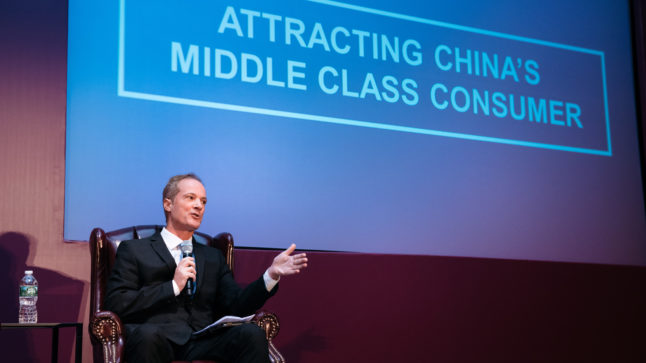*The following is an excerpt from the One Hour China Consumer Book, which is available here.
“Robert Ravens is an Australian farmer and the creator of the “Bobbie Bear”. He lives on a remote Tasmanian farm and uses excess lavender from his fields to make bright purple teddy bears. The lavender is stuffed into the bears along with some wheat and a heat pack. The fragrant teddy bears can then be heated in a microwave, which apparently makes them nice to sleep with. He mostly sold his Bobbie Bears online and in his farm’s gift shop.
However, in mid-2013, a young Chinese celebrity named Zhang Xinyu posted a picture of herself on her Weibo account hugging her Bobbie Bear. This went viral and caused young women across China to go crazy. They began to flood Mr. Ravens’ small Tasmanian farm with teddy bear orders.
Overwhelmed, Mr. Ravens had to stop taking Internet orders. He then had to stop taking phone, email or pre-orders. And then, finally, he had to start limiting bears sold in his gift shop to one per visitor, as Chinese tourists were somehow finding their way to his Northwestern Australian farm in droves. Visitors to the farm exceeded 60,000 annually and each bear that was finished was immediately rushed to the gift store. In 2014, Chinese president Xi Jinping was presented with a Bobbie Bear upon his arrival at the Tasmania airport. All of this was likely not what Mr. Ravens envisioned when he bought the run-down farm in 2007 as a retirement project.
At first glance, this story is similar to many China consumer stories. Surging Chinese demand with unexpected (and entertaining) consequences. However, within weeks of the Bobbie Bear phenomenon, shops across China began offering copycat purple bears. And soon hundreds of thousands of copycats were being sold online and then resold throughout China. Mr. Ravens responded by issuing authentication numbers for his bears so people could tell if they had the real thing.
And then a few months later, the Chinese government jumped in. Some of the fake bears had bugs in their stuffing (definitely not lavender) and the government issued a ban on all lavender bears, including the original Bobbie Bears.
This story, in many ways, is the real story of Chinese consumers. Yes, Chinese consumers are rising and are a big economic phenomenon (Mr. Ravens says people were hacking into his website to place teddy bear orders). But the competition for them can be very fast and utterly ruthless. And hovering just in the background of all this is the Chinese government, which frequently intervenes as an active player – and sometimes a competitor. “Consumers plus competition plus government” is a better description of what is really going on. The fight for one billion Chinese consumers is really about the shifting interaction of these three forces. And that is what this book is about.”
Thanks for reading. The above is from our best-selling book – the “One Hour China Consumer Book: Five Short Stories That Explain the Brutal Fight for One Billion Consumers”. (It is available here.). It is still my favorite but least read book. 🙂
Cheers, jeff
——-
I write and speak about digital China and Asia’s latest tech trends.

